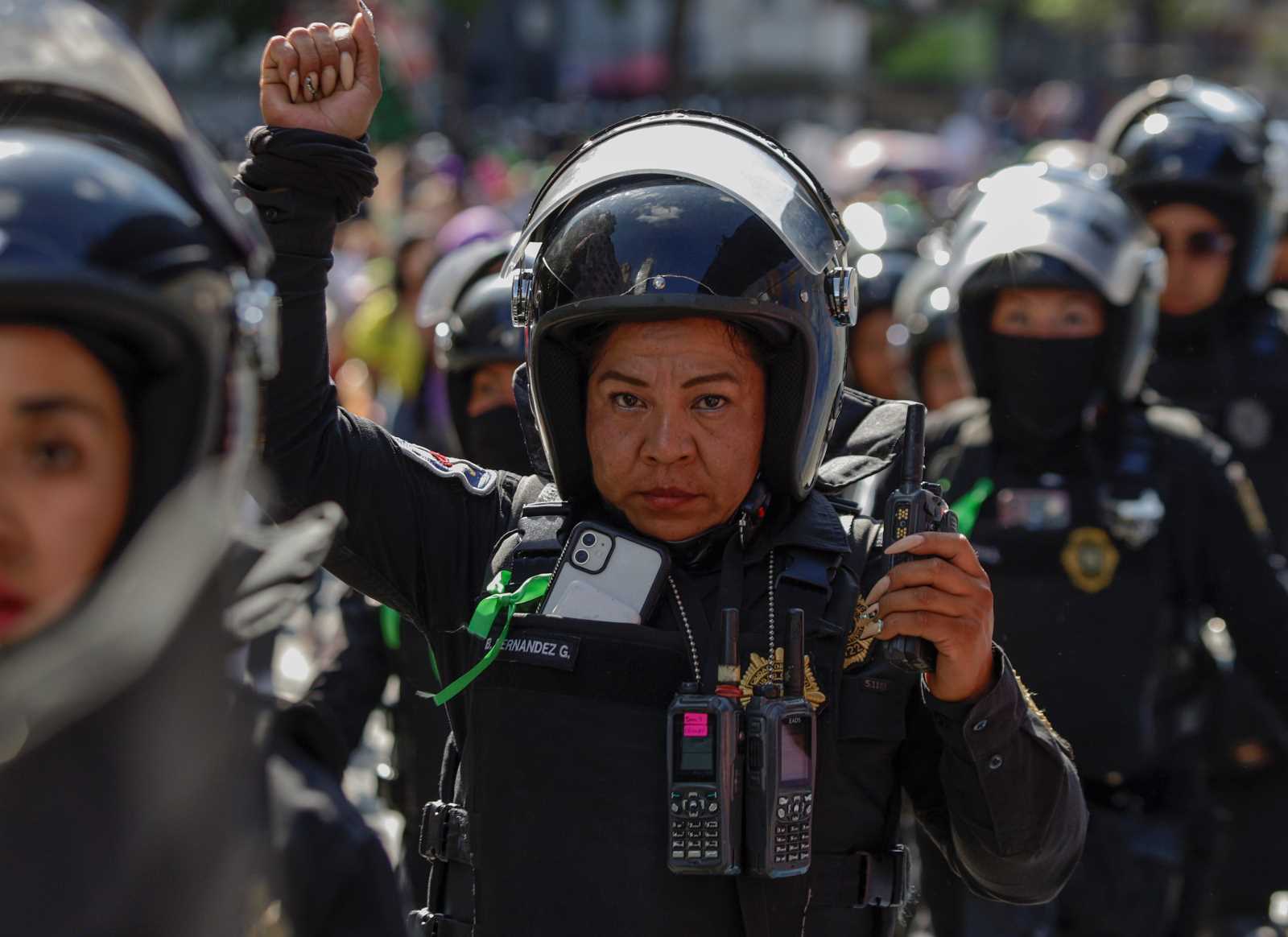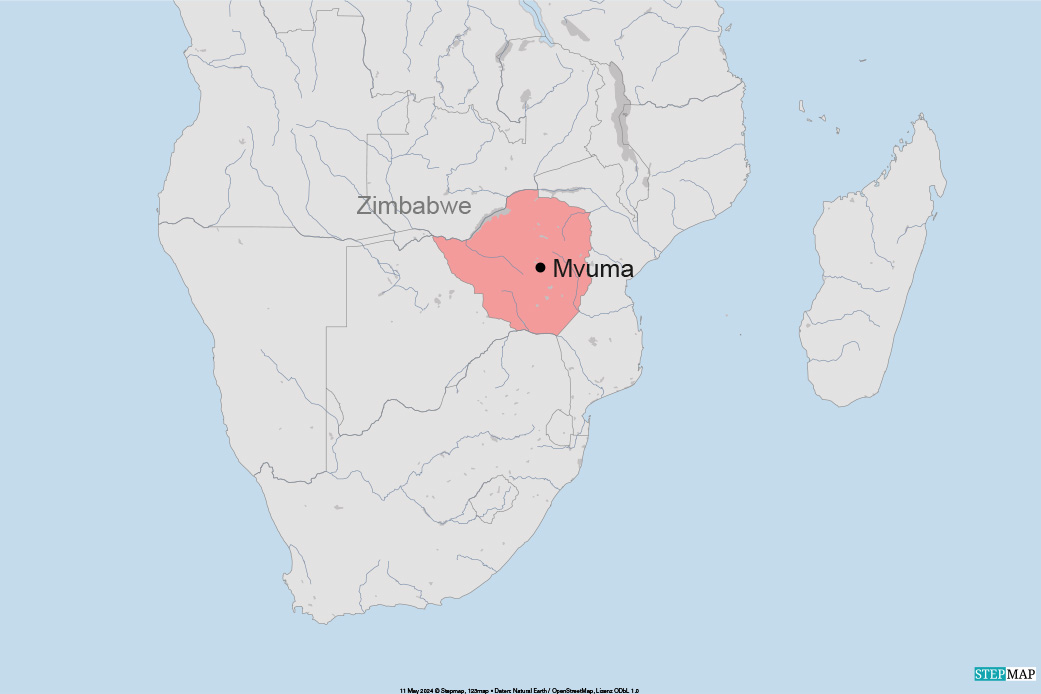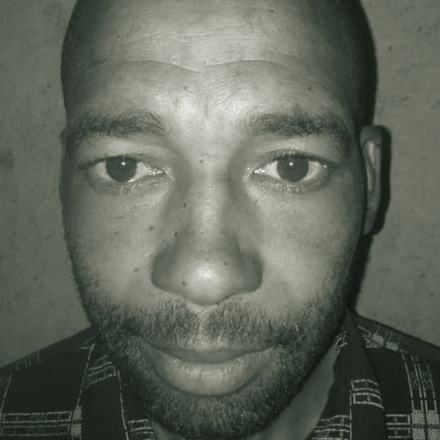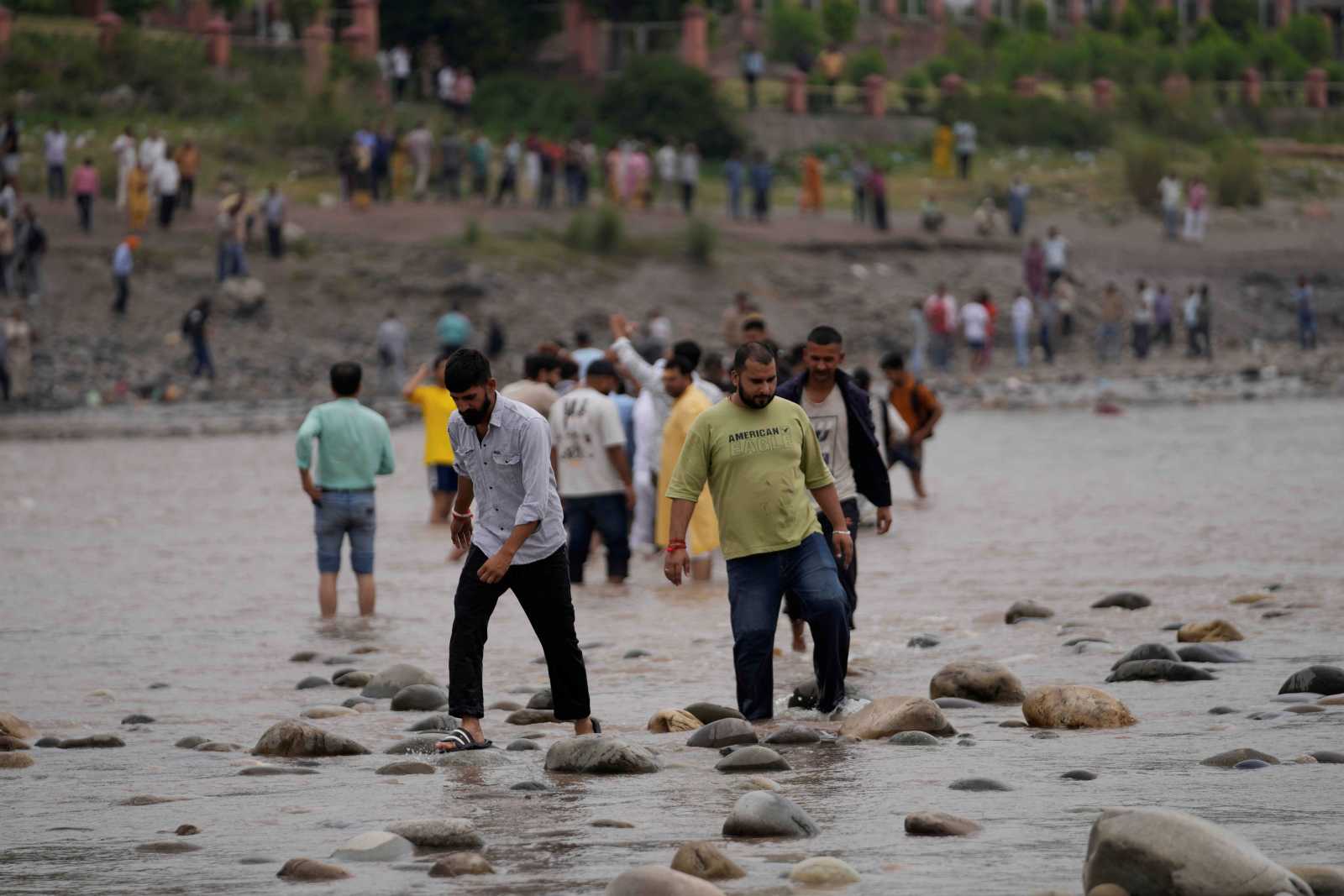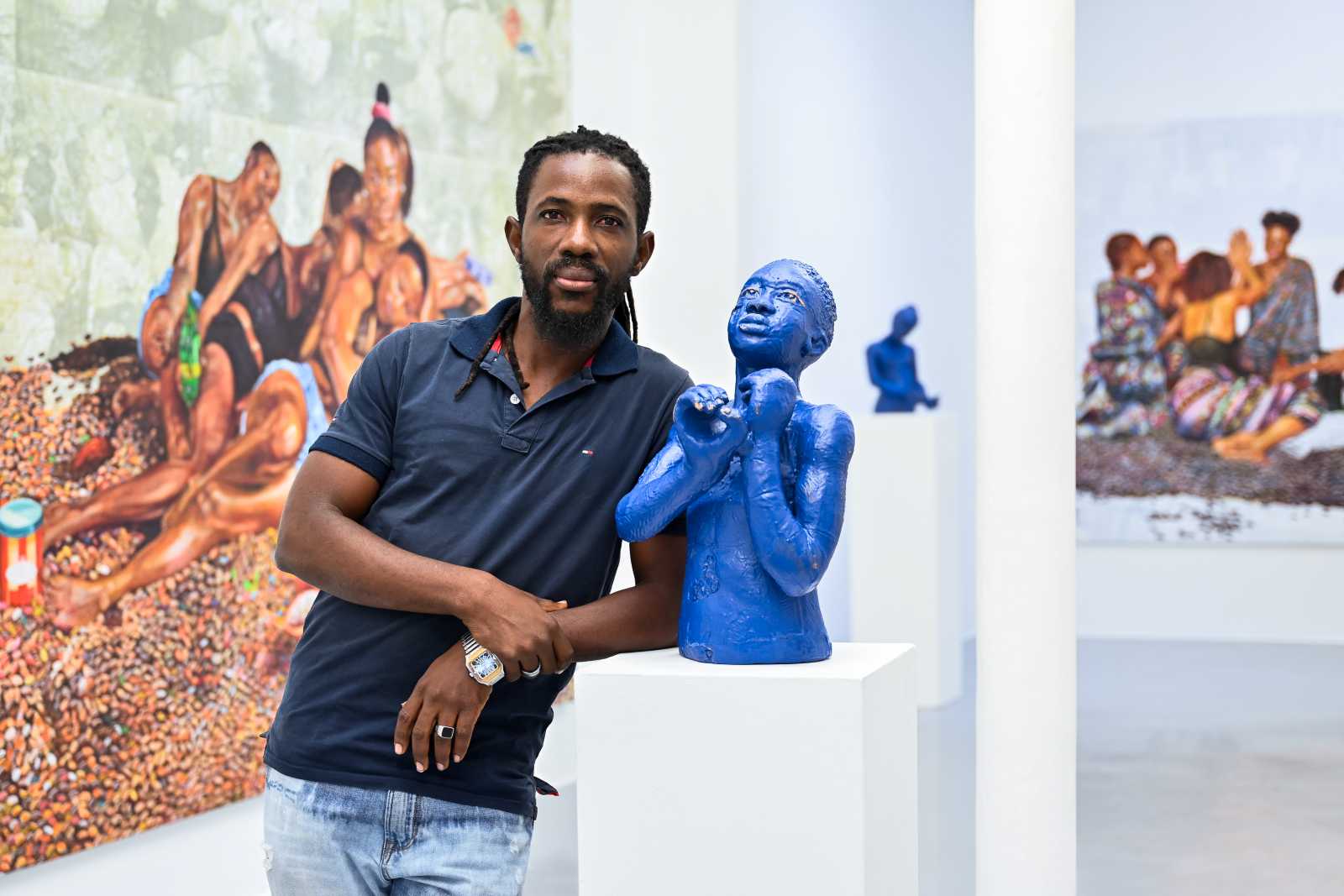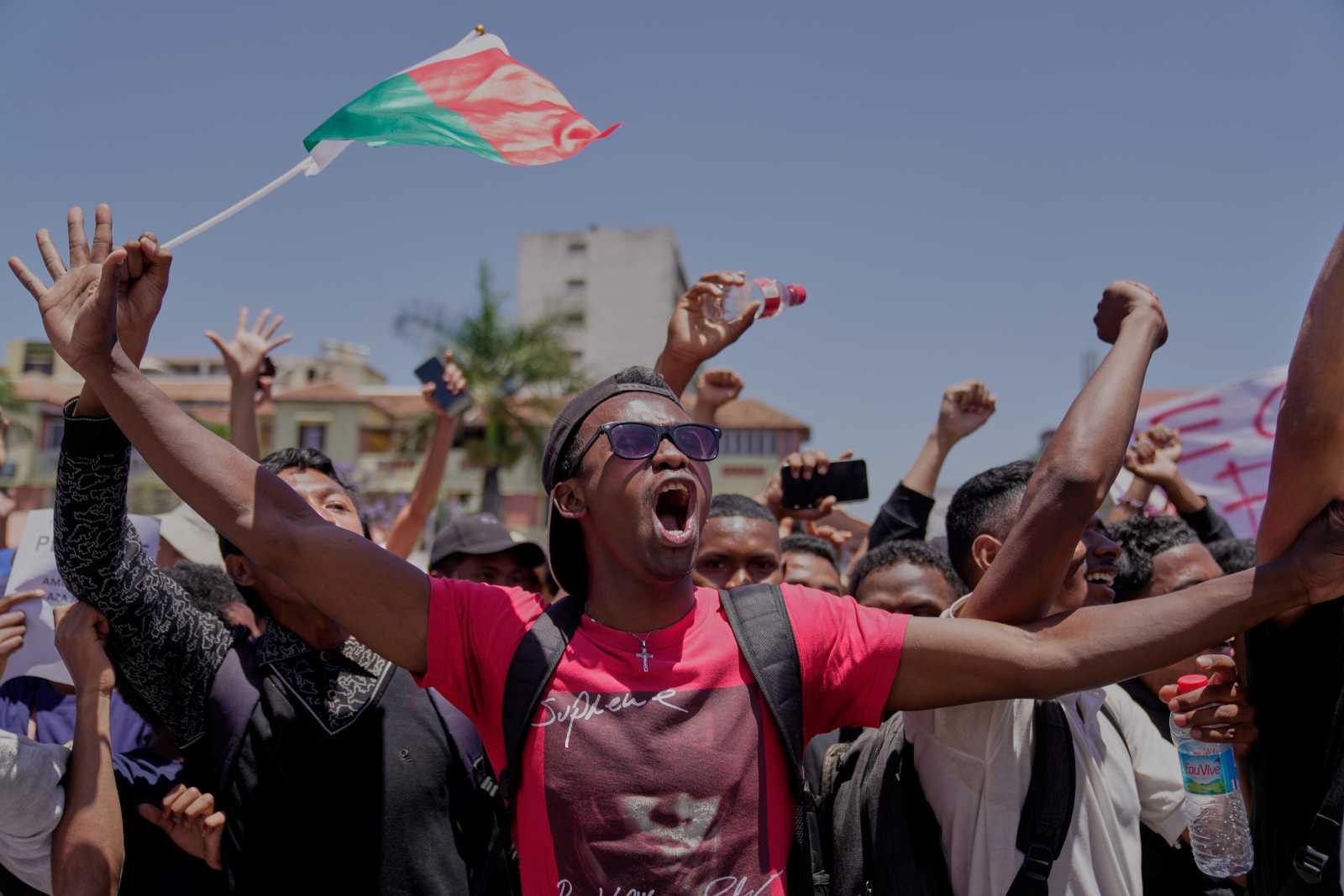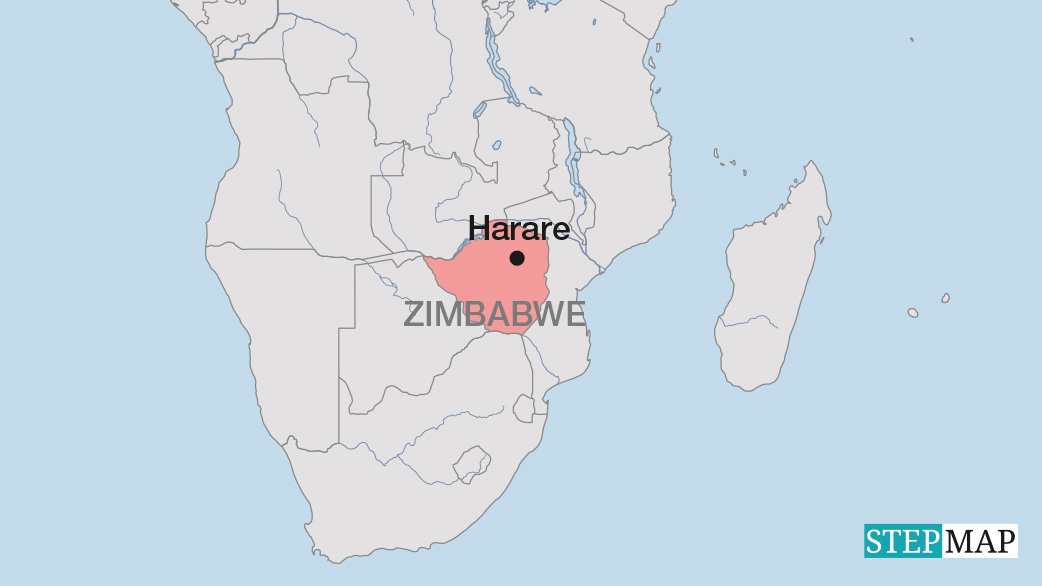Organised crime
Train of destruction
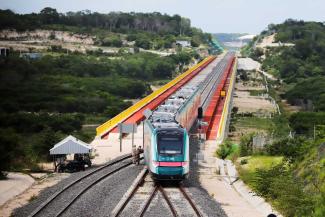
In the rainforest of Mexico’s Quintana Roo state, conservationist Elias Siebenborn wades through an underground cave, using his torch to guide him through the darkness. The cone of torchlight reveals bizarre formations of stalactites and stalagmites that are reflected in crystal-clear water – and steel pillars that have been rammed right through the middle of a natural artwork that has evolved over tens of thousands of years. Cast in concrete, the pillars have the job of underpinning the Tren Maya (Maya Train) tracks that run directly above this kilometres-long labyrinth.
Concrete seeps into the water through cracks in the pillars. A few months ago, Siebenborn noticed that machine oil was making the water in the underground pools more viscous and colouring it green – wreaking irreversible harm on the fragile ecosystem. “The government simply pushed everything through, even though much of it was illegal,” says Siebenborn, who lives in the coastal city of Playa del Carmen and is using his smartphone, drone and GPS device to document the damage caused by the railway. “Nobody knows how long the train will run safely,” he stresses.
The new railway line, a project in which Germany’s national railway company Deutsche Bahn also was involved, links several states, beaches and towns in the rainforest and Maya sites in the south-east of Mexico. Former President Andrés Manuel López Obrador’s prestige project, rolled out at lightning speed despite considerable criticism from scientists, was supposed to create jobs and attract tourists. More than 10 million trees were felled to make way for the Maya Train, many stretches being built in haste and in some cases illegally, without the statutory comprehensive environmental impact assessments being conducted. More than 120 underground caves collapsed or were filled in.
Siebenborn recently encountered monkeys that were screaming at a passing train. They were leaping from treetop to treetop, yet no thought had been given to providing them with crossing points. Animals such as tapirs and jaguars now have to go for miles to find water. Time and again, animals end up straying onto the fenced-in railway lines or being forced onto roads where they get run over. Along the train route, new hotels, luxury residential districts and industrial complexes – for the most part unregulated – are steadily eating their way into the rainforest.
Nature and the local population are paying a high price for the megaproject. For others, on the other hand, the railway’s construction and operation, not to mention the purchase and development of land close to the train line, represent nothing short of a gold mine. They include local and international businesses and politicians, as well as Mexico’s military top brass, who now manage the railway project and are pursuing other controversial projects, such as hotels in the rainforest. Mexico’s criminal organisations are also reaping the profits. As is the case with many megaprojects in Latin America, political, economic and criminal interests seem inextricably linked, blurring the boundaries between legal and illegal activities.
Unsufficient environmental assessments
The line at Playa del Carmen was originally supposed to be elevated, running along a road. However, in the face of opposition from hoteliers and other business owners who feared their land would decrease in value, the railway was promptly rerouted and now runs deep into the sensitive rainforest – without any studies of possible risks or environmental damage having been carried out.
Ex-President López Obrador had appointed prominent local businessman Daniel Chávez Morán as “honorary project supervisor”. The two men are friends, and Chávez Morán’s sons also have business relations with López Obrador’s sons, as reported by the anti-corruption think tank Mexicanos Contra la Corrupción y la Impunidad. Though the entrepreneur was at pains to deny any conflicts of interest, insisting that he would neither invest in the train nor accept any payment for his advisory role, he does own a luxury hotel located on the originally planned route.
According to Mexican water expert Guillermo D’Christy, the environmental impact report for the new route was submitted with a three-month delay – and was “merely a copy of the old report”. He says the analysis doesn’t even mention the 15,000 or so concrete and steel pillars that were drilled into the labyrinth of underground caves to stabilise the railway line and that now penetrate and pollute Mexico’s second-most-important groundwater reservoir.
Amílcar Olán, another businessman, also received government contracts and was the main supplier of track ballast. He is friends with one of the ex-president’s sons. Audio files published by the platform LatinUS revealed that he had provided low-grade material that had not been subject to the requisite quality checks. Recently a train derailed on a section of the line on which his material had been used.
Growing influence of drug cartels
According to leaked Mexican intelligence reports, the “La Barredora” group, believed to be part of the Mexican drug cartel “Cártel de Jalisco Nueva Generación (CJNG)”, was planning to provide 180,000 litres of stolen fuel per week for the railway construction work. One of the key figures belonging to “La Barredora” is the state of Tabasco’s former Secretary of Public Security Hernán Bermúdez Requena, who was arrested this September. His nephew oversaw work on two sections of the railway line. Bermúdez Requena is alleged to have supported and coordinated criminal operations even while serving as police chief, and to have been implicated in murder, abduction and corruption.
While the railway was being built, Mexico’s leading cartels and their offshoots widened their sphere of influence to include areas along its route. They profited from selling drugs to workers and anticipate new income streams from mass tourism – including extortion and protection rackets, as well as money-laundering potential through investments in hotel and residential complexes, restaurants or clubs.
Mexico’s cartels have invested hugely in the country’s booming tourism sector in recent years: between 2013 and 2023, more than 1800 tourism-related businesses such as hotels, restaurants or real estate companies, linked to organisations such as the Sinaloa cartel or the CJNG, were sanctioned by the US Office of Foreign Assets Control (OFAC). Politicians, businesspeople and civil-society representatives are often involved in criminal networks.
The US Department of Justice is currently investigating dozens of Mexican politicians suspected of involvement in organised crime. According to the online portal “Pie de Nota”, the list of individuals that the US government is pushing to have extradited includes three former governors, five senators and four members of parliament. According to Reuters, at least 50 politicians and government officials have had their US visas revoked.
Arrests for show
In many Latin American countries, the battle against organised crime is often just for show, its principal targets being heavily armed and tattooed gang members or cartel leaders. On TV, the army and police proudly present the drugs and weapons they have seized in raids, with large bags of drugs being set alight on air – yet deals are frequently done with gangs and cartels behind the scenes. In 2024, a US court sentenced Mexico’s former security minister and anti-drug czar Genaro García Luna to more than 38 years in prison for accepting millions of dollars in bribes from the Sinaloa cartel.
Honduran ex-President Juan Orlando Hernández was long seen as an exemplary leader in the fight against organised crime and a close ally of the US – yet in 2024 he was found guilty of organised crime himself. Though El Salvador’s President Nayib Bukele likes to parade tattooed gang members wearing shorts in front of the cameras for the political PR videos he has made in his mega-prison CECOT, he rose to power thanks in part to deals he did with gangs to get them to lower their murder rate.
“As a rule, organised crime infiltrates politics from bottom to top – from the local level all the way up to the federal level,” observes security expert Edgardo Buscaglia. In Mexico, criminal organisations such as cartels and indeed rich business tycoons, sponsor candidates they hope will do them political favours once in office – for example by making election campaign donations. Sometimes such organisations in Mexico also put forward their own “narco candidates” to stand in local or regional elections and get rid of rivals by pressuring them to withdraw or murdering them.
In the election year 2024, there were more than 750 attacks on politicians in Mexico, and 36 candidates were murdered. Mayoral candidate Yesenia Lara Gutiérrez was shot during a campaign event in the state of Veracruz, and the assassination was streamed live on Facebook. Colombian drug boss Pablo Escobar popularised the phrase “plata o plomo” (“money or lead”) for this strategy of using money or violence to control politicians. Escobar even managed to become a member of Congress in 1982.
Fighting organised crime
“Organised crime is more than just trigger-happy pistoleros who have people killed,” stresses Buscaglia. “A so-called cartel is simply one form of organised crime – yet its most damaging and common form, which erodes states and destroys democracy, is the way rich businesspeople gain a hold over politicians by illegally financing election campaigns, securing political favours for themselves and then enriching themselves through public contracts.”
Buscaglia believes the only way to properly understand the phenomenon of organised crime and have any chance of tackling it is to view it in just the same way as the 1970 US Racketeer Influenced and Corrupt Organizations Act (RICO Act) does – “that is to say as a group of well-organised individuals who regularly commit crimes without necessarily carrying a weapon or being involved in drug trafficking.” In Argentina for example, Buscaglia points out that the country’s most highly respected entrepreneurs ended up in court after paying bribes to ex-President Kirchner. The corruption scandal surrounding the Brazilian construction and engineering firm Odebrecht, which was responsible for projects such as airports, ports and roads, revealed that millions of dollars had been paid to politicians, including heads of state. Odebrecht had a department dedicated solely to handling and disguising corruption.
“Institutional antibodies” could help proactively uncover criminal dealings, says Buscaglia. “Ideally, illegal election campaign funding, megaproject infiltration and conflicts of interest should be combated by conducting regular audits to verify for example the source of funds – rather than merely investigating them after the fact,” he believes. “But in Mexico it will be virtually impossible to find any legally robust evidence of unlawful deals because there are no control mechanisms and hardly any investigations, and corruption at the highest level never even makes it to court.”
Skyrocketing costs, unpaid bills
According to the think tank México Evalúa, the budgeted costs of the Maya Train have skyrocketed by 176 % – incurring additional costs equivalent to around $ 17 billion. The think tank also claims the train is not profitable, having covered only 10 % of its overheads in 2024. Dense rainforest has been paved over with modern, all but deserted railway stations – concrete constructions sporting just a few flower beds with neat rows of miniature plants. Some are like ghost towns, with more soldiers than passengers.
Just a few months ago, President Claudia Sheinbaum’s new government acknowledged the environmental damage that has been caused by the railway. She intends to analyse the extent of the damage to the rainforest, caves and water and investigate how it could be curbed. It’s not clear who will pay the bill – yet Sheinbaum is already planning to extend the Maya Train line to Guatemala and Belize.
Sonja Peteranderl is a journalist and founder of BuzzingCities Lab, a think tank that focuses on digital innovation, security and organised crime.
euz.editor@dandc.eu
This research was funded and supported by Netzwerk Recherche and the non-profit environmental funding organisation Olin gGmbH.



